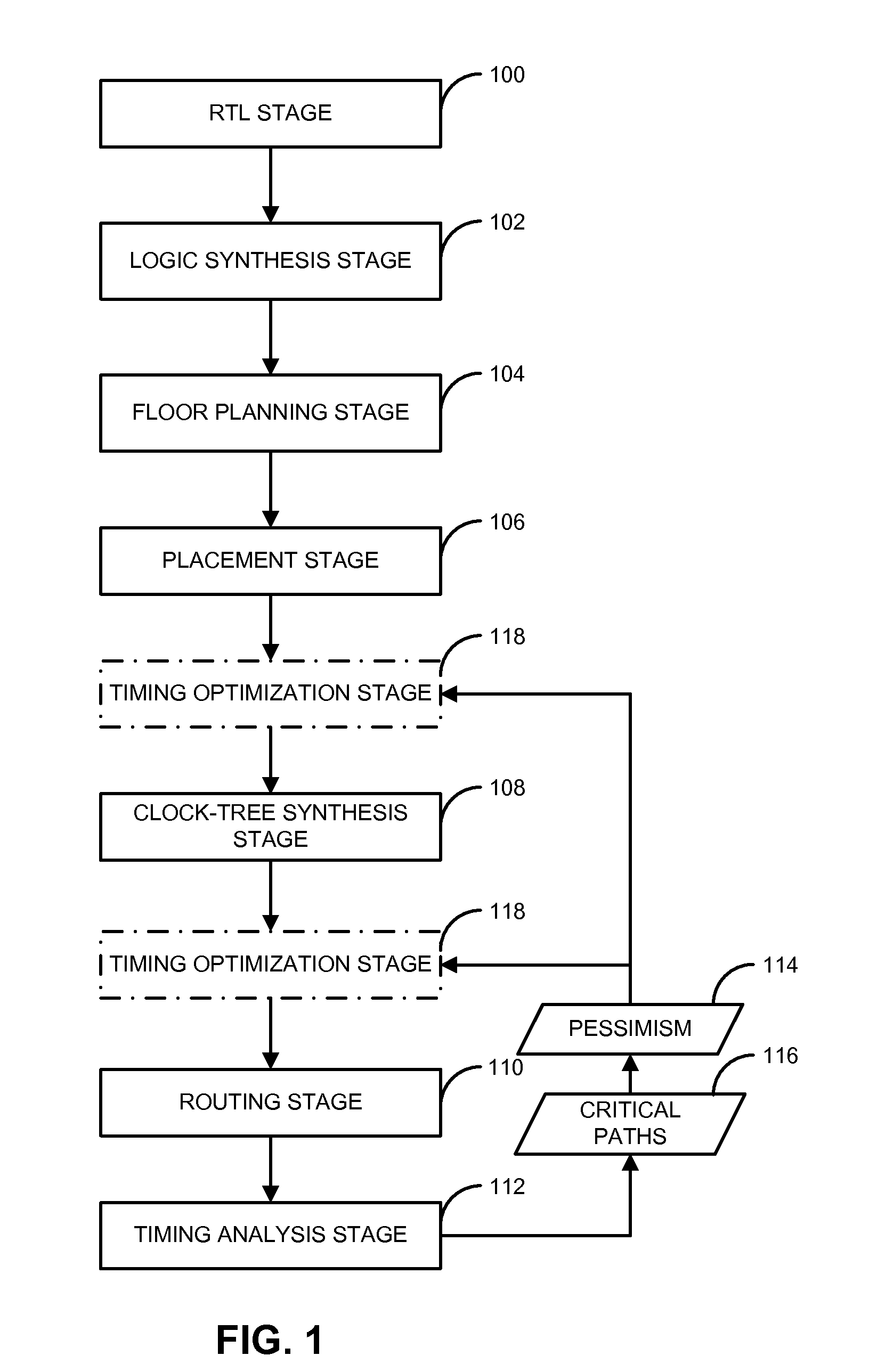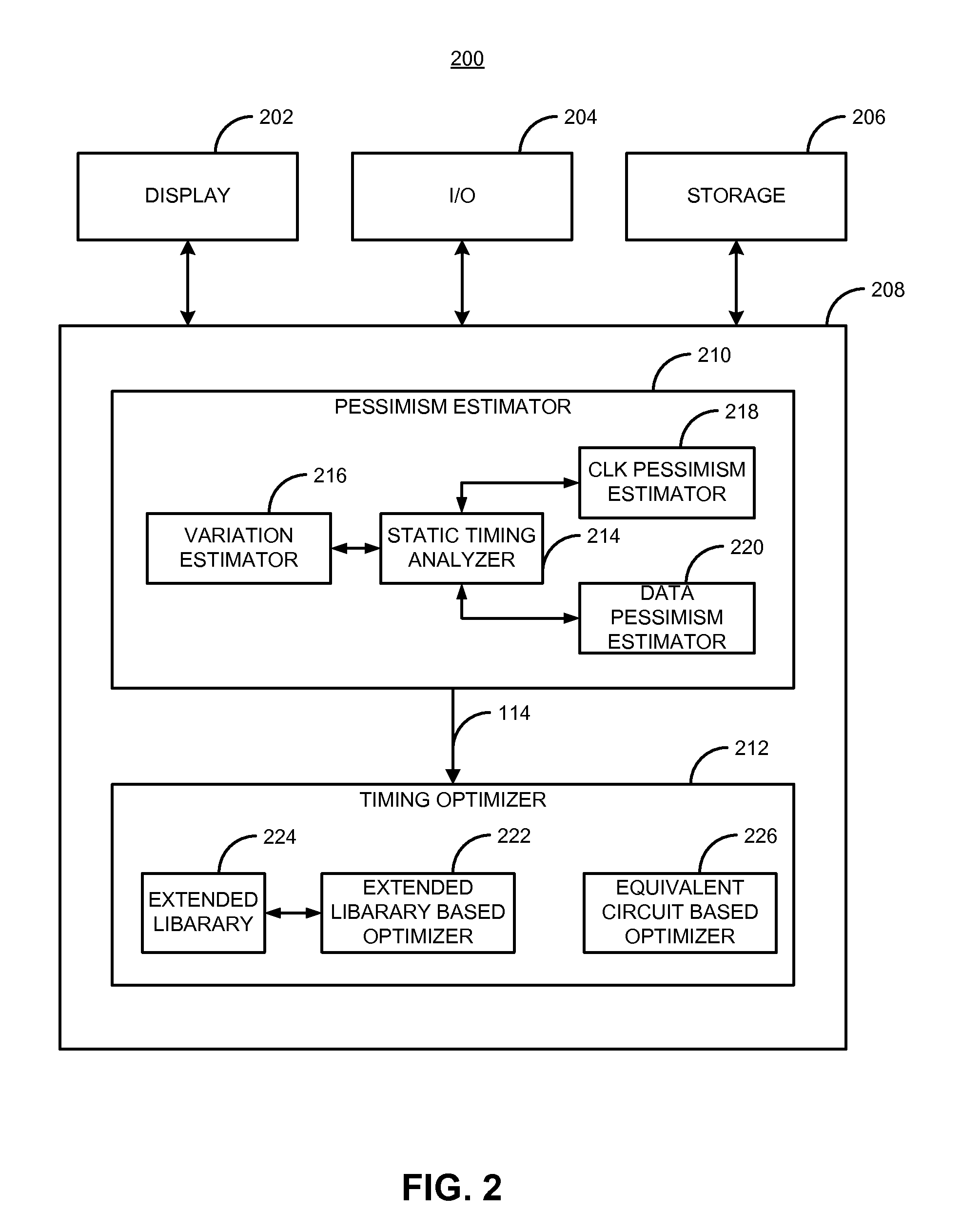Method and apparatus for designing an integrated circuit
a technology of integrated circuits and design methods, applied in computer aided design, program control, instruments, etc., can solve problems such as reducing timing yield, process variation affecting the frequency performance of integrated circuits, and difficulty in achieving the target frequency performance consistently all parts
- Summary
- Abstract
- Description
- Claims
- Application Information
AI Technical Summary
Problems solved by technology
Method used
Image
Examples
Embodiment Construction
[0021]Briefly, in one example, a method and apparatus for designing an integrated circuit to operate at a desired clock frequency range reduces process variation by estimating the value of removable pessimism from a static timing analysis. The pessimism includes, for example, at least one of the removable on-chip-variation (OCV) margin from clock paths, removable OCV margin from data paths, removable IR drop margin from clock paths, and removable interconnects margin. At the timing analysis stage of a design flow, the method and apparatus determines the value of pessimism in the timing critical paths based on timing correlation between adjacent timing critical paths. In response to the determination, the value of pessimism may be reduced in the static timing analysis of the adjacent timing critical paths to optimize the timing performance of the integrated circuit at its desired clock frequency range.
[0022]Among other advantages, for example, the method and apparatus provides the ab...
PUM
 Login to View More
Login to View More Abstract
Description
Claims
Application Information
 Login to View More
Login to View More - R&D
- Intellectual Property
- Life Sciences
- Materials
- Tech Scout
- Unparalleled Data Quality
- Higher Quality Content
- 60% Fewer Hallucinations
Browse by: Latest US Patents, China's latest patents, Technical Efficacy Thesaurus, Application Domain, Technology Topic, Popular Technical Reports.
© 2025 PatSnap. All rights reserved.Legal|Privacy policy|Modern Slavery Act Transparency Statement|Sitemap|About US| Contact US: help@patsnap.com



